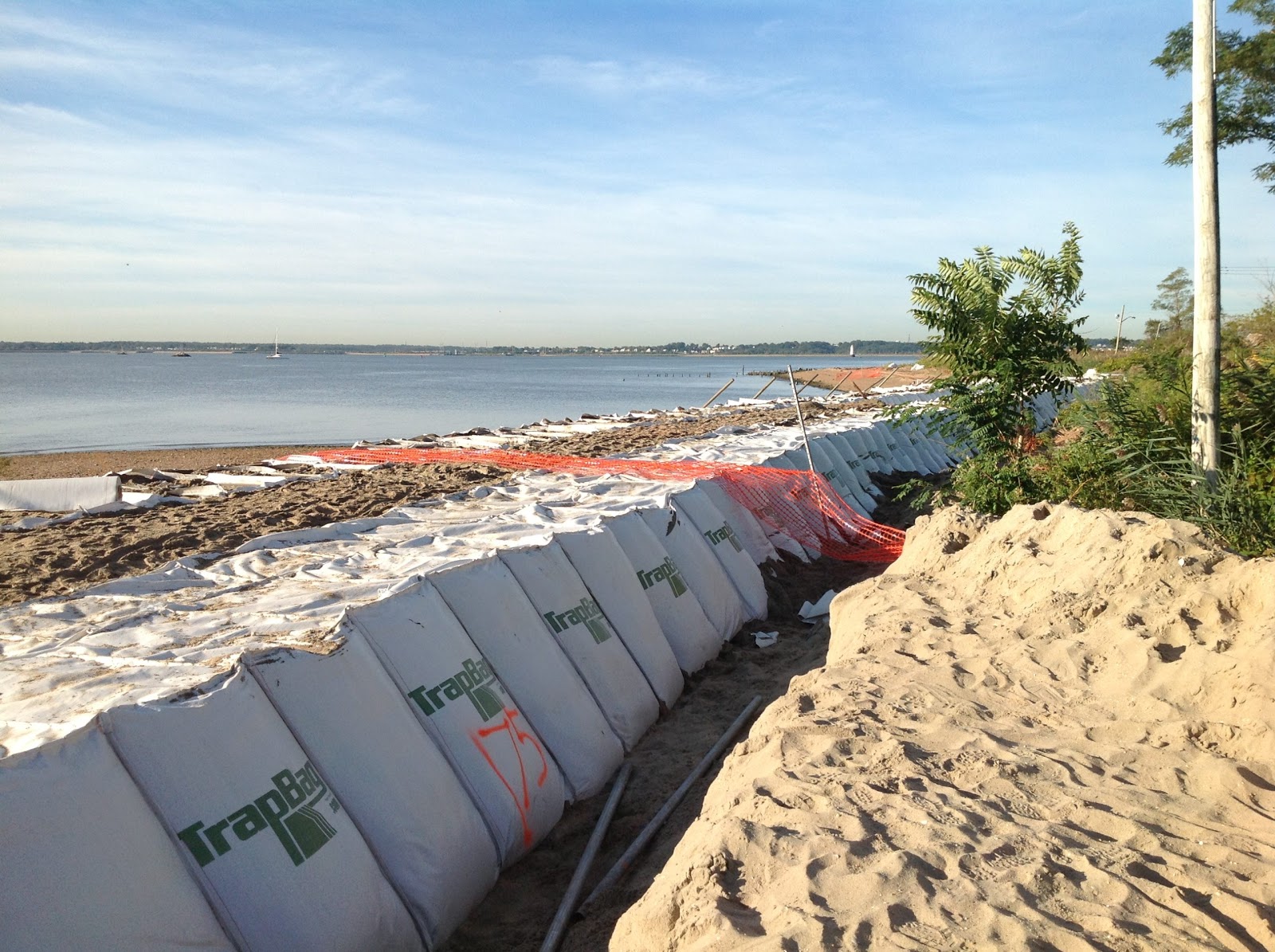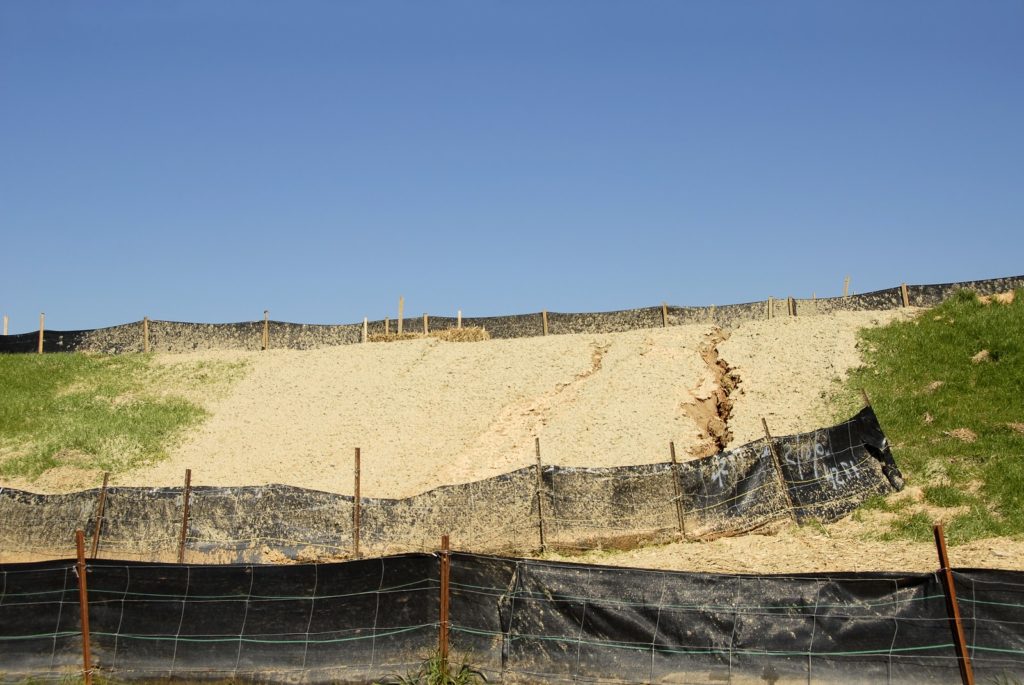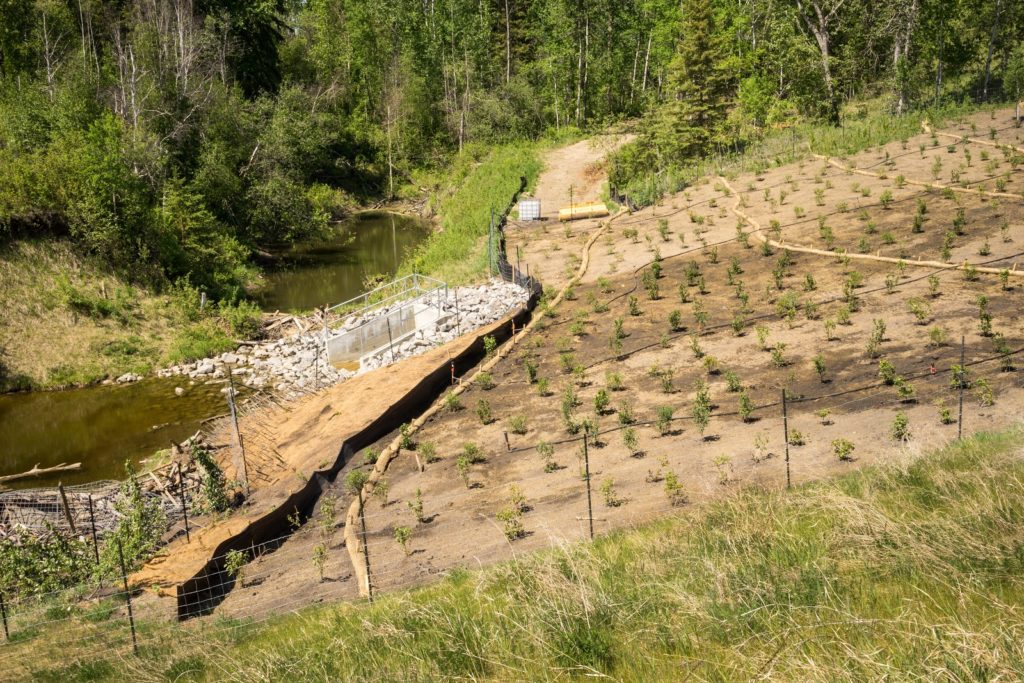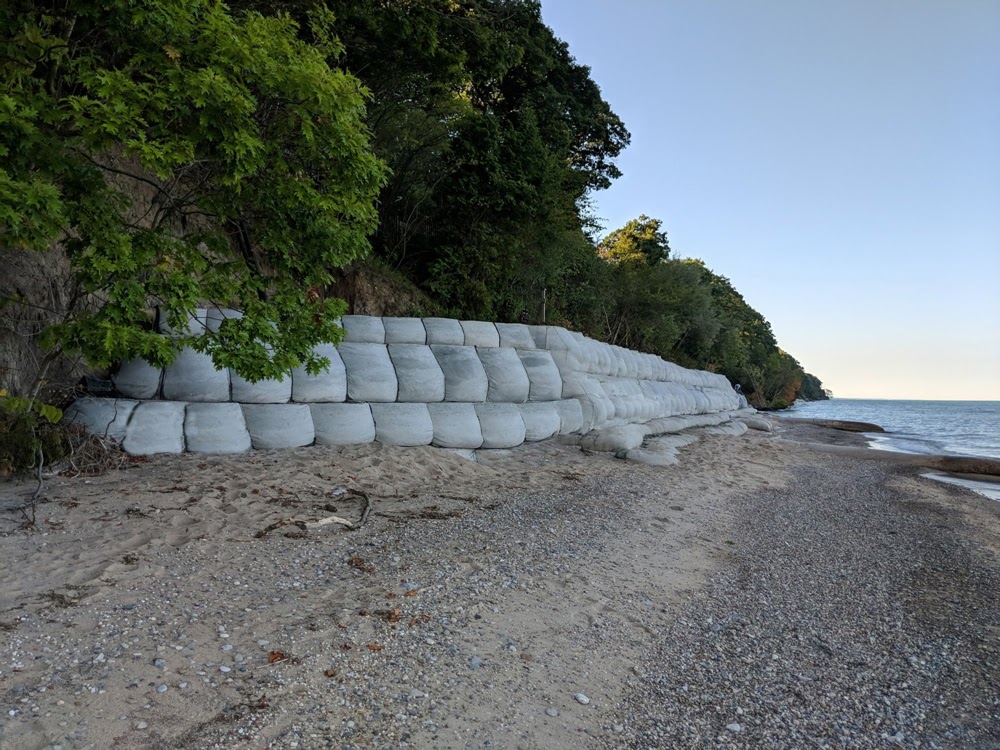Coastal erosion can have severe destructive effects on property. Many shoreline property owners implement erosion control methods in order to protect their homes and property from the effects of erosion. Erosion control is also necessary in other erosion-prone locations such as construction sites, on slopes, and in flood zones.
What are the most common types of erosion control barriers?
There are many different types of erosion control barriers. Each has pros and cons depending on the specific situation. Some barriers are more effective than others. These methods can be compared in terms of cost, effectiveness, environmental consequences, and durability.
Fencing
Silt fencing is one method of erosion control not only along a shoreline, but also on construction sites and other erosion-prone areas. A silt fence is only a temporary measure. They are made of porous fabric held up by posts which are driven into the ground. They are inexpensive and easy to install and remove.
“A single 100 foot (ft) run of silt fence may hold 50 tons of sediment in place” https://www3.epa.gov/npdes/pubs/siltfences.pdf .
In order for a silt fence to be effective, three factors must be considered:
- Proper placement
- Quantity of fencing
- Appropriate materials
Improper placement of the silt fence will render it ineffective. “Placement is important because where a fence starts, runs, and ends is critical to its effectiveness. Improper placement can make the fence a complete waste of money.” https://www3.epa.gov/npdes/pubs/siltfences.pdf
Silt fences can be useful along a shoreline to support vegetation projects. A silt fence can be used to protect the seeds from displacement by wind or wave erosion, or from animals. Once the vegetation is established, the fencing can be removed.
“The most natural and effective way to prevent erosion control is by planting vegetation. Roots from plants, especially trees, grip soil and will effectively prevent the excess movement of soil throughout the ground. A good way to imagine this process is by picturing two flower pots, one filled with nothing but soil, and one filled with a plant that has been growing in it for some time. If you flip the pots over, the one with only soil will create a huge mess, and soil will be displaced. The one with the plant may lose some soil, but a majority of it will be contained in the root mass.” https://www.soildistrict.org/soil-erosion-control/erosion-control/
Vegetation Barriers
As stated above, vegetation is Earth’s natural method of erosion control. Removing natural vegetation at your shoreline property will worsen erosion. If plants have been removed causing erosion, re-vegetation is an important step property owners must take.
Only vegetation that is native to the property should be used. “Vegetative barriers are narrow strips (1-3 feet wide) of stiff, erect densely growing plants, usually grasses, planted across the slope perpendicular to the dominant slope.” nrcs.usda.gov
The purposes of vegetative barriers are:
- To slow wind and water erosion by holding the soil in place
- To reduce wave erosion by absorbing wave energy
Vegetation is the most environmentally friendly method of shoreline erosion control. It is also sometimes referred to as bioengineering. Native plants have deep root systems which help to hold soil in place. Vegetation also helps to reinforce slopes.
Seawalls and Retaining Walls
Seawalls and retaining walls are a very common erosion control method. “A seawall is a type of shoreline hardening that is designed to protect property from shoreline erosion. Seawalls are typically made of hard materials including concrete, rock, and wood.” https://trapbag.com/seawalls/
Seawalls are effective in emergency situations like storm surges. There are three types of seawalls: vertical, curved, and mound seawalls. Mound seawalls are made using sandbags or dirt. “TrapBags® can be used to create a mound seawall. By filling our TrapBag® Fabric Forming System with concrete you create a permanent seawall to protect your property. Once the concrete settles you can remove the TrapBag® Fabric Forming System. The benefit of using a TrapBag® Fabric Forming is it is simpler, less expensive and less time consuming compared to installing large boulders/rip-rap or sheet piling.”
Seawalls can be effective in preventing wave erosion short-term. Long-term, however, traditional steel seawalls cause worsening erosion. This is due to wave flanking, or the deflection of wave energy towards neighboring properties. Scouring also occurs frequently. Scouring is when the wave energy is directed downwards and “scoops” out the bottom of the lake. This disrupts the natural ecosystems. Scouring also causes the seawall to eventually fail because the water is able to flow beneath the structure.
Mound seawalls are less likely to cause these issues because they are better at absorbing rather than deflecting wave energy.
“Although they hold soils in place behind the structure, seawalls usually accelerate erosion on adjacent beaches. The structures impede natural landward migration of beaches in response to sea level rise, halting upland growth of new beach. In some instances, the beach migrates entirely to the base of the seawall and disappears completely (passive erosion). Wave energy is reflected off seawalls, increasing erosion at the toe of the wall (active erosion) and subsequently from adjacent beaches as well. In many areas, beaches have completely eroded and disappeared on account of seawalls. Revetments, like seawalls, protect resources landward of the structure but likely at the expense of the seaward slope. Materials such as armorstones, stepped concrete, or rip-rap stones are placed directly in the existing slope face to absorb wave energy and strong currents. Bulkheads provide a similar purpose but are vertical standing structures running parallel to the shoreline, often constructed of rock-filled timber cribs and gabion, steel, or concrete.” https://www.nps.gov/articles/seawalls-bulkheads-and-revetments.htm
Geotextile Bags
Geotextile bags are made out of permeable geotextile fabric. This fabric is more durable than that of standard sandbags. They are a newer method of erosion control. TrapBag® is a geotextile bag system. Our bags are made of high-strength textile and use 40% less fill material than stacked sandbags. Our system can be used to create erosion control barriers that last up to and beyond 5 years.
They can be used for:
- Shoreline erosion control
- Land reclamation
- Island creation
- Dams, dikes, and levees
- Breakwaters
- Revetments
- And more…
Geotextile bags like TrapBag® are rapid-deploy and easy to install. They are also better for the environment than steel seawalls.
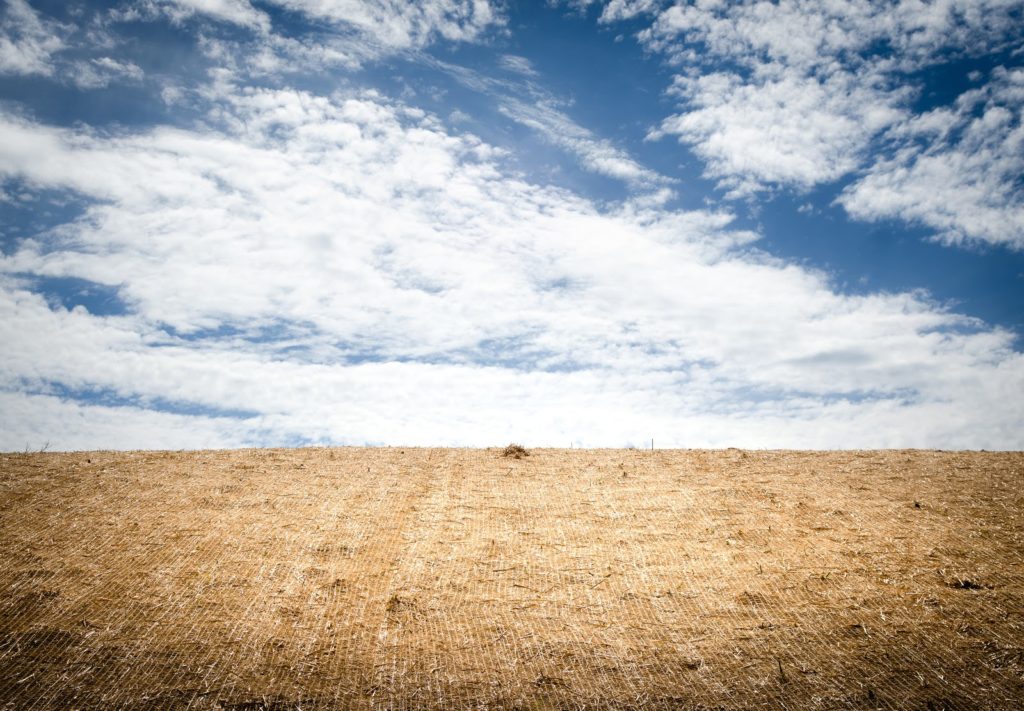
Erosion Control Blankets
Erosion control blankets are made of different materials that are woven together. They are often placed on slopes in order to slow runoff and reduce erosion. There are several types of erosion control blankets made of different materials, both natural and synthetic. Some of the common materials include polypropylene, jute, coconut fiber, and straw.
These blankets are relatively easy to install, but in order to be effective, must be installed properly. Proper installation includes “keying” the blanket into the slope. This is done by creating a small trench along the top of the slope. Next, line the trench with the top of the blanket using staples. The trench should now be filled back in.
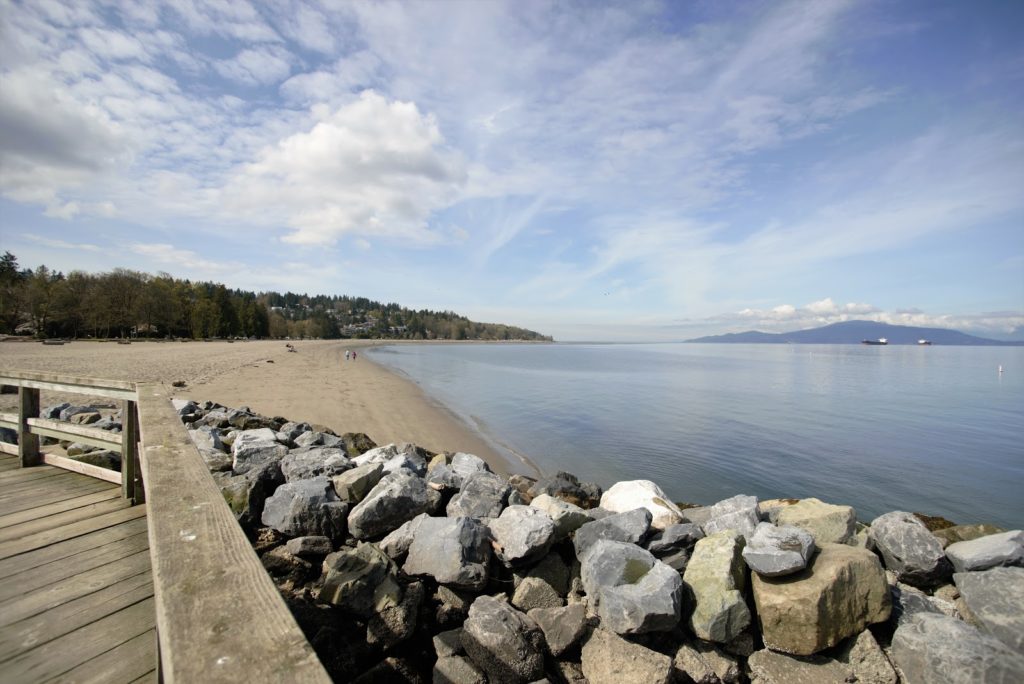
Rock Revetments
Rock revetments, like seawalls are types of shoreline hardening. They are composed of either natural rocks or concrete blocks. They work to protect the land behind them from wave erosion.
“Because these effects are now well understood, new construction of these hard structures is only allowed in very limited circumstances. This fact sheet addresses the more common practice of repair and reconstruction of existing seawalls and revetments. Given the technical and permitting issues involved with seawall and revetment repair and reconstruction projects, a coastal engineer should be consulted for site-specific advice.” https://www.mass.gov/doc/stormsmart-properties-fact-sheet-7-repair-and-reconstruction-of-seawalls-and-revetments/download

What are the pros and cons each?
Pros and cons of erosion fencing:
The advantages and disadvantages of erosion fencing include:
Advantages:
- Inexpensive
- Quick to install
- Easy to install
Disadvantages:
- Less effective depending on soil type
- Require frequent maintenance
- Less effective in larger areas
- Less effective on slopes
- Ineffective in areas with concentrated flow because of low permeability
- Temporary solution
Pros and cons of vegetation barriers:
The advantages and disadvantages of vegetation barriers include:
Advantages:
- Most environmentally-friendly method of erosion control
- Inexpensive
- Easy to implement
- Long-term solution
Disadvantages:
- Not effective in the short-term or emergency situations
- Vegetation requires time to establish
Pros and cons of seawalls and retaining walls:
The advantages and disadvantages of seawalls include:
Advantages:
- Effective in emergency situations
Disadvantages:
- Highly detrimental to the environment
- Expensive
- Requires professional installation
- Ineffective long-term
- Requires maintenance
- Causes worsening erosion
Pros and cons of geotextile bags:
The advantages and disadvantages of geotextile bags include:
Advantages:
- Rapid-deploy
- Easy to transport, store, and install
- Durable
- Up to and beyond 5 year effectiveness
- Requires less fill material than traditional sandbags
- Cost-effective
- Versatile
Disadvantages:
- Not a permanent solution
Pros and cons of erosion control blankets:
The advantages and disadvantages of erosion control blankets include:
Advantages:
- Helps establish vegetation
- Inexpensive
- Easy to install
- Environmentally-friendly
Disadvantages:
- Less durable
Pros and cons of rock revetments:
The advantages and disadvantages of rock revetments include:
Advantages:
- Better at absorbing wave energy than steel seawalls
- Easy to maintain
- Better for the environment than steel seawalls
- Durable
Disadvantages:
- Expensive
- Cause some environmental problems
Which erosion barriers are best for slopes?
Erosion control blankets are designed to reduce erosion on slopes. Erosion on slopes occurs due to runoff. Fast-moving runoff carries soil with it, leading to erosion. Both vegetation and erosion control blankets can help reduce the velocity of runoff and therefore, reduce erosion.
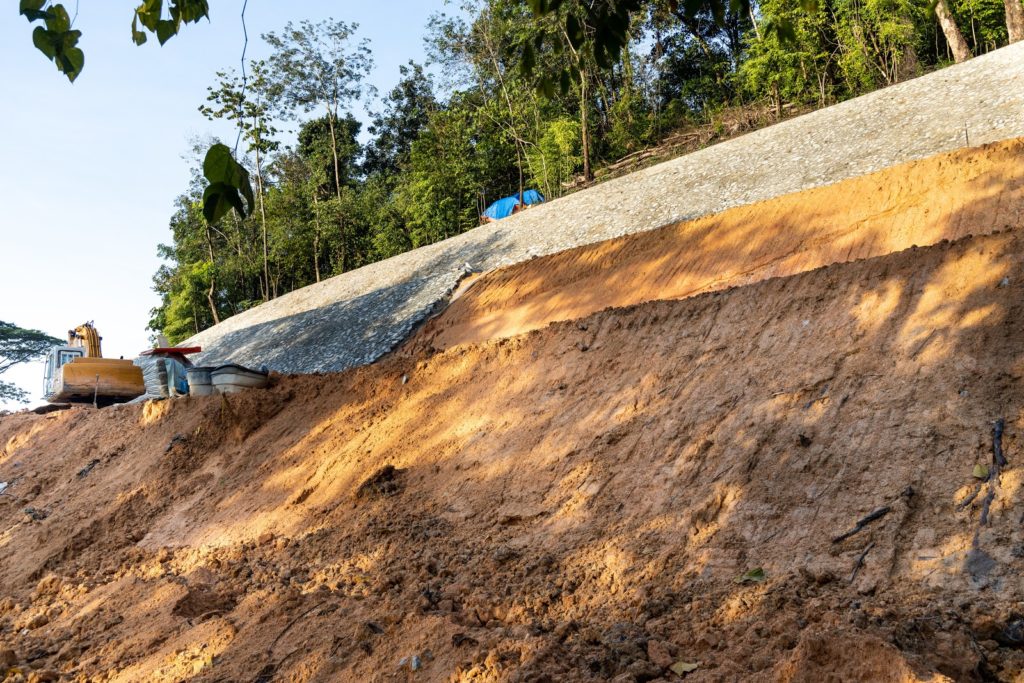

Which types of erosion barriers are best for dunes and beaches?
Dunes are challenging to stabilize because they face both wind and wave erosion. Dunes are naturally dynamic and change throughout the years, but human practices can hasten this change and cause problems.
“Erosion control solutions like TrapBag® are efficient, affordable and highly effective at sand dune stabilization.” TrapBag® barrier systems are effective solutions for strengthening dune cores and preventing erosion.
“Dunes protect other areas from erosion and flooding but during storm surge events the foot of dunes get eroded. By installing TrapBags® in the core of a dune you ensure that a system is in place for protection even if the rest of the dune is compromised during a storm event.
All over the world sand dunes are under heavy attack from higher sea levels and more severe weather conditions as a result of the continuous process of global warming. By installing a TrapBag® barrier system inside the dune core, the erosion of the dune can be slowed down drastically or even brought to a halt.”
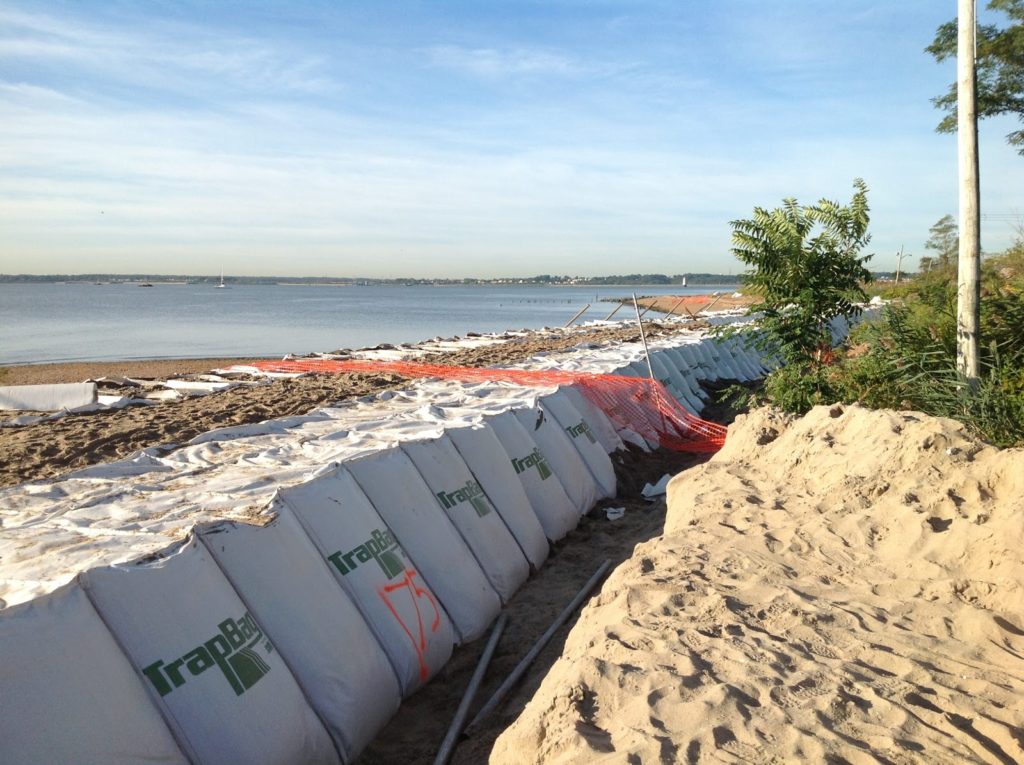

Which types of erosion barriers are easiest to install or deploy?
Trapbag® barriers are rapid-deploy and relatively easy to install. “TrapBag® is a series of pentagon-shaped bags that are sloped on one side, vertical on the opposite side and open at the top for filling. Each of the cells are connected side by side like an accordion, each cell has a common wall with the next cell, and are collapsed during storage and deployment. The cells are made of high-strength textile. Each of the cells are self-contained yet rely on the next cell for added strength. If one of the cells is compromised, it will not affect the rest of the barrier, which will remain standing strong.
TrapBag® uses 40% less fill material than a stacked sandbag wall, but more importantly a single 100 foot section of 4ft high TrapBag® replaces approximately 8,000 sandbags making TrapBag® Barriers an excellent alternative to small and large sandbags.“ https://trapbag.com/product-details/
Which types of erosion barriers are permanent solutions?
Temporary Erosion Barriers:
- Revetments
- Seawalls
- Silt Fences
- Erosion Control Blankets
- Sand bags
- Geotextile bags
Permanent Erosion Barriers:
- Reforestation
- Vegetation Barriers
- Bioengineering
What types of erosion control barriers meet best management practices or industry standards?
Erosion control best management practices must be adhered to when installing erosion control barriers. They define the most effective measures that can be taken to control erosion. Erosion BMPs depend on the location (state) and situation. There are different BMPs for different situations like construction sites, dunes, shorelines, slopes, etc.
Sources:
https://www.portlandoregon.gov/bds/article/101683
https://www3.epa.gov/npdes/pubs/siltfences.pdf
https://depts.washington.edu/propplnt/Chapters/erosioncontrolchapter%5B1%5D.pdf

